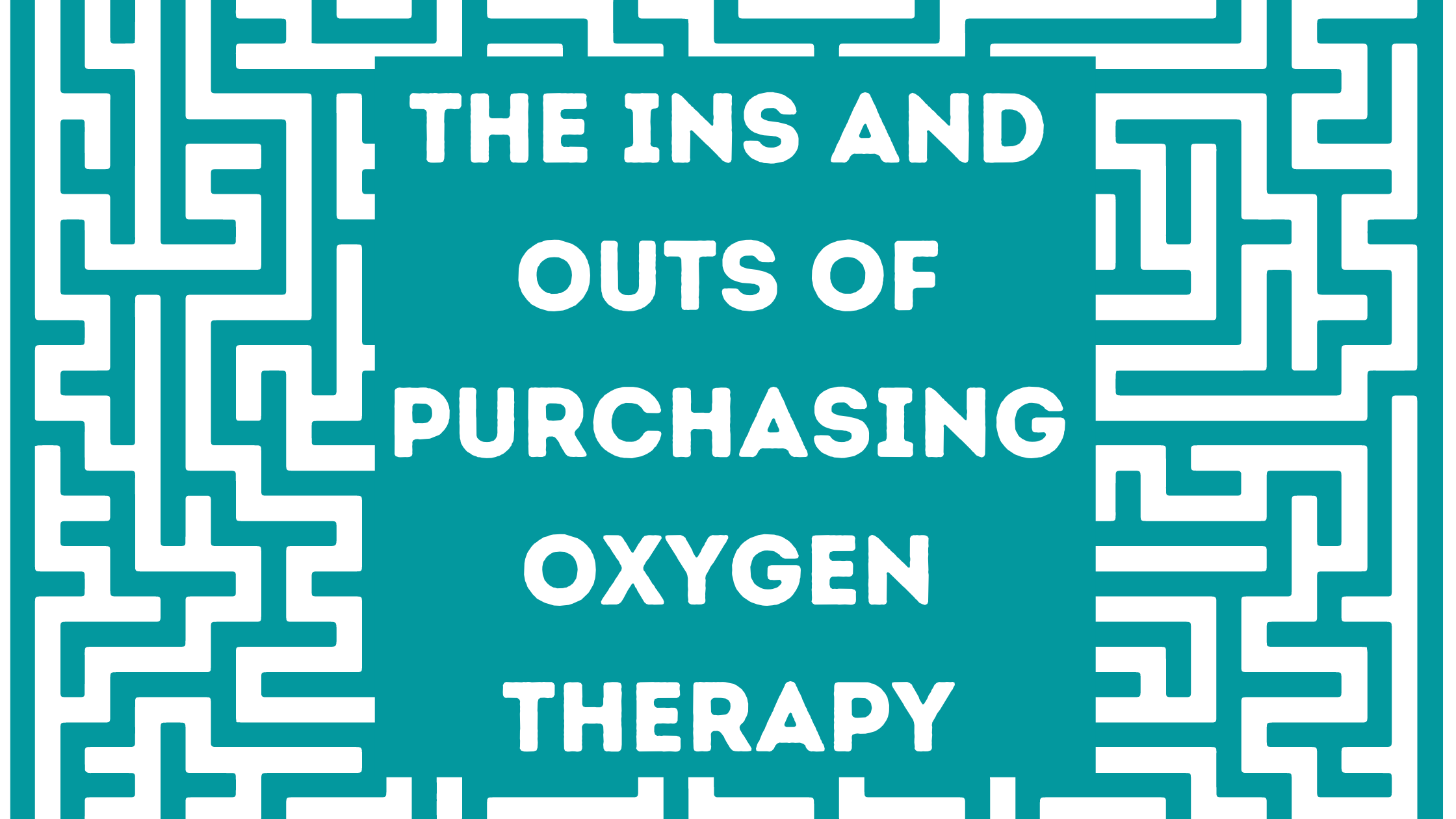
Long term oxygen therapy (LTOT) is a common treatment administered to respiratory patients in the comfort of their home, and depending on their prescription sometimes 24 hours a day. Lung diseases like COPD are chronic, and so LTOT can be life changing and life saving for people who have these low blood oxygen levels, which is also known as hypoxemia.
Oxygen therapy in itself is a simple concept, however there is confusion about where and how a person should buy their oxygen device. Anyone who is administering their own treatments or medication should be aware of every detail when it comes to health and safety, but they should also be informed about their purchasing options. Purchasing an oxygen device can feel as if you are in a maze, at each turn you find a barricade forcing you to start at the beginning again, and the cycle repeats itself. This article guides you through this maze so you know what to look out for, how to make the right choice, and more!
This article will take you through all of the ins and outs of what you should look for when purchasing your oxygen therapy device. This is your all intensive guide into the buying process of a breathing device, what you should look for, and how to make the best choice for you.
What is long-term oxygen therapy

If you have ever experienced a respiratory emergency where you went to the hospital and they put tubes in your nose to help you breath, that is oxygen therapy. This is a necessary treatment if you have ever had trouble breathing on your own and it can be used to save your life.
The difference between this emergency treatment and long-term oxygen therapy is that LTOT is administered while you are at home while going about your daily life, According to International Journal of Chronic Obstructive Pulmonary Disease LTOT should be prescribed for at least 18 hours per day, although some experts suggest that 24 hours would be more beneficial.
Long term oxygen therapy, if done correctly, is proven to improve survival and other qualities of life for COPD patients with chronic respiratory failure.
LTOT doesn’t just help you live a longer life, it helps you to live more active and worthwhile life by:
- Reducing the number of hospitalizations
- Increasing your lung capacity
- Increasing your ability to exercise
- Helping you to get better sleep
- Improving your moods
- Improving your health-related quality of life
{{cta('fa8abc2a-1e88-4fa3-82fd-1cb5b9ed43b2','justifycenter')}}
LTOT would normally be administered in the comfort of your home, by you, therefore the delivery method should meet your oxygen requirements but also be accustomed to your lifestyle.
Most people are prescribed oxygen anywhere from 16-24 hours a day so, this means you should choose a device that fits into your daily routine. You have a few choices when it comes to an oxygen system. These include devices you use only at home and lightweight alternatives you can take with you when you go out.
You’ll choose a oxygen device based on:
- How often you leave the house or travel
- If you need to go up and down stairs
- Your size, endurance, and physical strength
- How much oxygen flow your doctor prescribes
Oxygen devices

Three of the most popular portable devices you can choose from, each have their own pros and cons, and you should pick the best options for you:
- Compressed liquid oxygen tanks
- Oxygen gas tanks
- Portable oxygen concentrators (POC)
This article should give you some insight into what option is best for you.
If you already know that you are interested in buying a portable oxygen concentrator, and you are curious about which brand and model you should get, please read our other blog about the pros and cons of the best portable oxygen concentrators in 2020 by clicking the link here.
Affordability
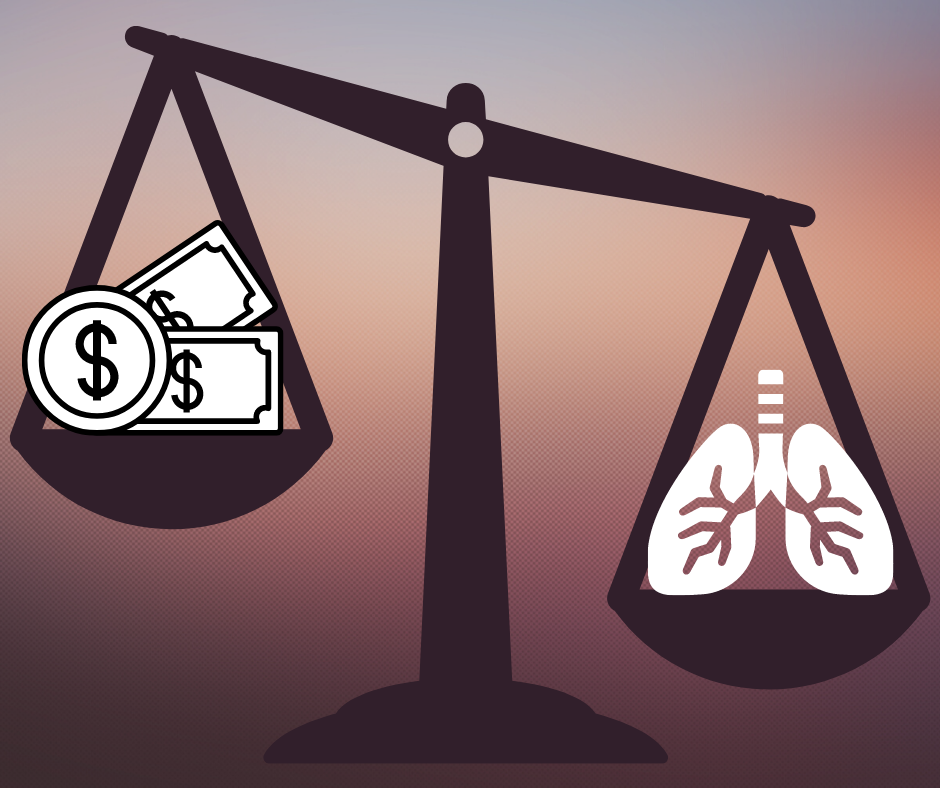
The upfront costs of portable oxygen concentrators tend to scare off oxygen patients all of the time. This is unfortunate because the prices that are posted online are, for the most part, not the price you would pay for your POC. Due to the manufacturer's advertising policies, oxygen equipment licensed distributors are required to post their prices. Even if the seller has a special, discount codes, or a sale.
So even when you simply search on google “portable oxygen concentrators prices” you will see them ranging from $2,000 to $3,000 depending on the brand, year, and model. To inquire about the real prices, you can call 1-800-946-1021 and speak with a respiratory specialist who knows these devices inside and out.
The other affordable aspect of portable oxygen concentrators is that you never have to refill the device, because it is extracting the air surrounding it, compressing and purifying it into the medical-grade oxygen that you are breathing int. At LPT medical we offer a 3 year long warranty on all our portable oxygen concentrators, so you won’t have to pay for a broken part or a malfunction!
Oxygen devices like the Respironics SimplyGo Portable Oxygen Concentrator have a compressor that is rated to last 20,000 hours. Others like the SeQual Eclipse 5 Portable Oxygen Concentrator were designed for the US Military, and it has the longest-standing track record for being durable and reliable.
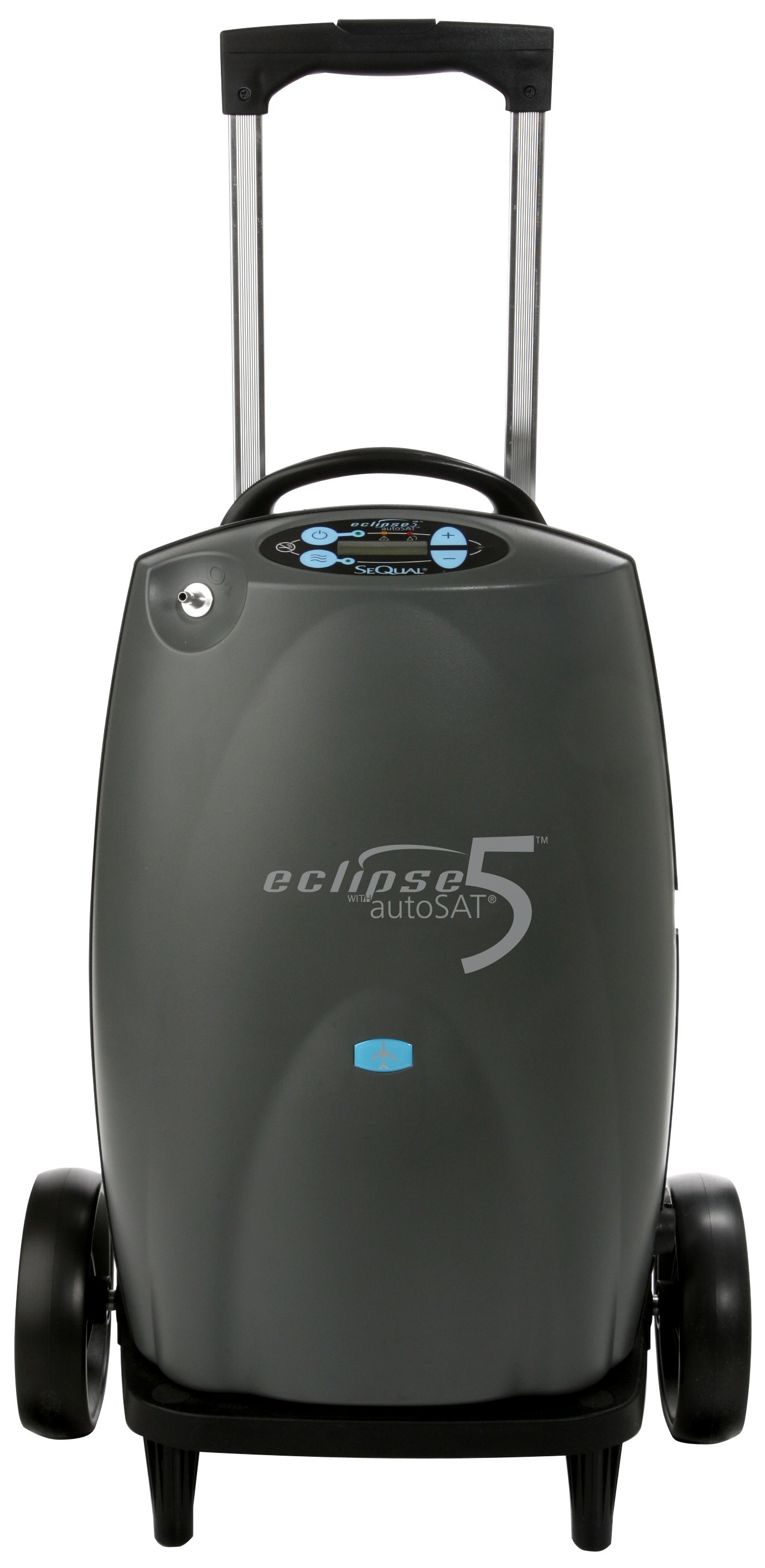
All in all, a portable oxygen concentrator is going to last you a very long time, and there are no recurring costs, all you pay for is the device upfront. Also by purchasing a portable oxygen concentrator through LPT Medical you have the option to finance and pay monthly, or buy a used and refurbished device that is less expensive upfront.
For more information about your purchasing options and prices, please read this other blog that we have linked here, or call us at 1-800-946-1201
Portable oxygen canisters must be refilled multiple times per week, each time costing you money. The bigger tanks that you leave in your home to use are even more expensive to refill. While oxygen tanks are the most traditional form of oxygen, it is also the most outdated. Even with the low-initial costs, the recurring costs eventually add up, leading to higher costs over time.
Portability

Unlike portable oxygen concentrators, oxygen tanks are heavy and bulky. Their weight and lack or portability are one of the most commonly noted disadvantages of tanks. While wheel-mounted cart systems can help to make rolling oxygen tanks manageable, the tanks themselves are still rather heavy. Lifting the tank—for example, to put it in a vehicle or carry it up a staircase—can be challenging or even impossible for some simply due to the weight of the device.
Depending on the oxygen flow you need to fill your oxygen prescription, portable oxygen concentrators are very light weight, and small in size. Units like the Inogen One G5, Inogen One G3, and the Caire Freestyle Comfort, all range in weight from 4 pounds to 6. All are small enough to fit inside a purse or backpack, and come with their own carrying case. Having such a lightweight and portable breathing device is great for oxygen patients who want to be more active and do more things, and not to mention travel by plane.
.png)
Having a portable breathing device is essential for keeping up with a consistent exercise regime that is a necessary treatment for all COPD patients. You should be getting the right amount of exercise relative to your health and ability. Having a portable device can make it easier to go for walks, golf, or do any other activities you like to do as your daily physical activity.
Having a breathing device that is designed to be potable is also great for keeping your morale high. It is no secret that having a chronic illness like COPD can be hard for patients mentally. If you have COPD and a portable oxygen concentrator you have the freedom and independence you need to live a normal life without having to adjust your daily routine to fit your oxygen device. Instead your oxygen device fits into your lifestyle.
Battery life vs. tanks

Portable oxygen concentrators generate oxygen using a rechargeable battery, depending on the unit, you can have anywhere from 3-16 hours with oxygen until you must either switch the battery to your backup, or recharge the device. You can recharge any device using an AC or DC power source, meaning you can use a traditional outlet in your home, or the cigarette lighter in your car or boat.
An oxygen tank on the other hand does not need a power source. The tanks or canisters are filled with a finite amount of oxygen that you use up until it is empty and have to get it refilled or replaced. Normally, you pay an oxygen supply company to come to your home and deliver new tanks and take your old ones. The tanks that are heavy and are hard to move around don’t run low as often, probably once a month depending on your oxygen prescription, and the smaller travel canisters run out at least once a week.
Having a battery powered oxygen device versus refilling your oxygen tanks is a personal preference, most people find that charging their portable oxygen concentrators is as simple as charging your cell phone, and having an extra battery to replace one while it charges is the most efficient option.
Insurance

Obviously in a perfect world, insurance would cover all respiratory patients' oxygen devices but this is not the case. There are some very rare situations where Medicare or insurance will cover the purchase or rental of one of our portable oxygen concentrators. In order to qualify, you have to meet strict criteria, and each situation is evaluated on a case-by-case basis.
That being said, You will need to talk to your insurance provider to understand what kinds of oxygen supplies they cover and what requirements you need to meet in order to qualify.
Medical insurance companies have a notorious reputation of denying patients coverage for medical equipment and treatments including portable oxygen concentrators. Unfortunately, Medicare is no exception. They have strict rules that make getting coverage difficult and burdensome, and they often find reasons to deny approval for a treatment even when a doctor says that it's the best option.
If you want the best possible chance of getting insurance or Medicare to pay for your medical equipment, you need to be aware of your provider's criteria on the subject. You must follow their guidelines carefully, to avoid getting rejected on a technicality.
We have a very informative blog about medicare and oxygen equipment that you can find here
In this blog ,we offer a lot of insight into the healthcare system and what it means for oxygen patients like yourself.
One example of Medicare's criteria for covering supplemental oxygen and related equipment:
- You have a serious lung disease (such as COPD, cystic fibrosis, bronchiectasis, etc.), or you have symptoms of low blood oxygen levels (such as pulmonary hypertension, erythrocythemia, congestive heart failure, etc.)
- Your health is likely to improve with supplemental oxygen therapy
- You have medical tests from your doctor to prove that you have low blood oxygen levels (and these tests were taken while your condition was stable, e.g. not during an exacerbation)
- You have tried other medications and treatments, but are still unable to get enough oxygen
- You need oxygen therapy 24/7 (Medicare will not cover supplemental oxygen therapy if you only need to use it at night)
This criteria has to be verified by your doctor in writing before you can receive Medicare benefits for supplemental oxygen. Your doctor will also have to write and submit a detailed report of your oxygen needs, called a Certificate of Medical Necessity.
Which method of oxygen equipment should you choose
.jpg)
While all of this information pertains to the oxygen user, it is important to note, that if you do not need oxygen therapy, meaning your blood oxygen levels are not chronically low enough that your doctor would recommend, let alone, prescribe you oxygen therapy, you should NOT administer oxygen therapy for yourself.
Who needs oxygen therapy

Even though long-term oxygen therapy can be beneficial for many people, not all respiratory patients need it. W
hen considering a lung disease like COPD, According to the American Thoracic Society, appropriate candidates for LTOT include:
- Patients who have an established medical regimen, with a 7.3 KPa (55 mmHg) partial pressure of oxygen measure by looking at arterial blood gases, and an oxygen saturation level of 88% or less.
- Patients who have a partial pressure of oxygen of 7.3–7.8kPa (55-59 mmHg), an oxygen saturation level of 89%, and also shows signs of hypoxemia, pulmonary hypertension, edema from right-sided heart failure, high red blood cell count or impaired mental status.
If you are unable to maintain healthy blood oxygen levels only while you sleep or when you exercise, you may also benefit from using supplemental oxygen specifically under these circumstances.
Moreover, because there are special cases, if you do not fall under these criteria but have severe shortness of breath or limited exercise capacity that may improves with supplemental oxygen you should still talk to your doctors about whether you would qualify for, and more importantly benefit from, long-term oxygen therapy.
Buying from a licensed distributor
{{cta('b59df0c1-c4de-47a8-8e1c-0d33d4b414aa','justifycenter')}}
In order to be sure that you are getting an oxygen device, for example, a portable oxygen concentrator, from a licensed distributor, you can simply look on the company’s website and find their certification. At LPT Medical, you will be happy to know that we are a family owned and operated business .
LPT Medical knows what it means to serve the community and treat our customers like family and we are committed to quality and dependability. Our track record shows that we have become one of the most trusted names in the world of oxygen therapy products offering home oxygen concentrators, portable oxygen concentrators, CPAP and BiPAP machines, and all the education you need to make the most of your equipment and subsequently your life.
When you are buying oxygen equipment, something that is so life changing and a reasonably large financial decision, you must be sure that you are buying from a company that you trust. Quality is one of the first words that should come into your head when buying any medical device. If the equipment is designed to make your life easier, it is always important to take into consideration how long your equipment will last and how efficient the machine is.
LPT Medical offers products from the most reputable manufacturers in the industry including but not limited to Inogen, Philips Respironics, Drive Medical, and more. These are innovative companies that are exceeding the limits of what’s possible for patients suffering with a debilitating respiratory condition. By offering these brands, we are here to connect more people around the country with the most state-of-the-art oxygen therapy equipment in the world.
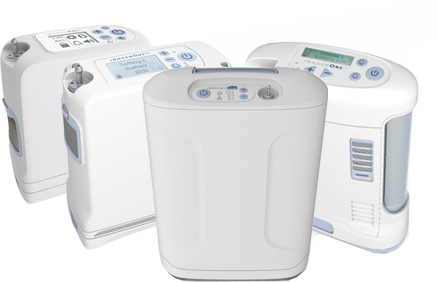
Flow settings
Depending on your oxygen needs, your doctor will either prescribe you pulse flow or continuous flow oxygen or a combination of both and you will be required to buy a device within those boundaries. It is important you do not take more oxygen and it is important that you do not try to go without it, both could do a lot of harm. If you are unsure about your oxygen prescription you should call your doctor and have them go over the process with you until you feel comfortable doing so on your own, and also during an emergency situation.
So the flow settings can be pulse or continuous, pulse gives off a bolus of oxygen every time you inhale and continuous flow settings exert oxygen constantly even when you are not inhaling.
The rate at which oxygen is flowing is known as the oxygen output, and it is most commonly measured in liters per minute. If you require more oxygen your oxygen output will be set to a higher setting and vise versa.

If you only need roughly 210- 630 mil/min of oxygen at a pulse dosage setting, you oxygen device must be able to emit that much oxygen per minute, and if you buy from a qualified company, the seller would advise for you to get a device that is capable of outputting even more oxygen than what is prescribed to you for a number of reasons.
You might be instructed by your doctor to increase your oxygen flow setting in the case of an emergency while you are experiencing an exacerbation or a flare up. In this situation you want to have a device that can increase its oxygen output so that you are able to manage the emergency how your doctor instructs you.
Also, the nature of a chronic progressive respiratory illness is that it gets worse over time. This means, that one day you might need a higher flow of oxygen than what was first prescribed to you in order to meet the demands of your body. In these cases, you want a device that will be able to adjust to your needs and increase its output before you have to buy an entirely new device that is powerful enough.
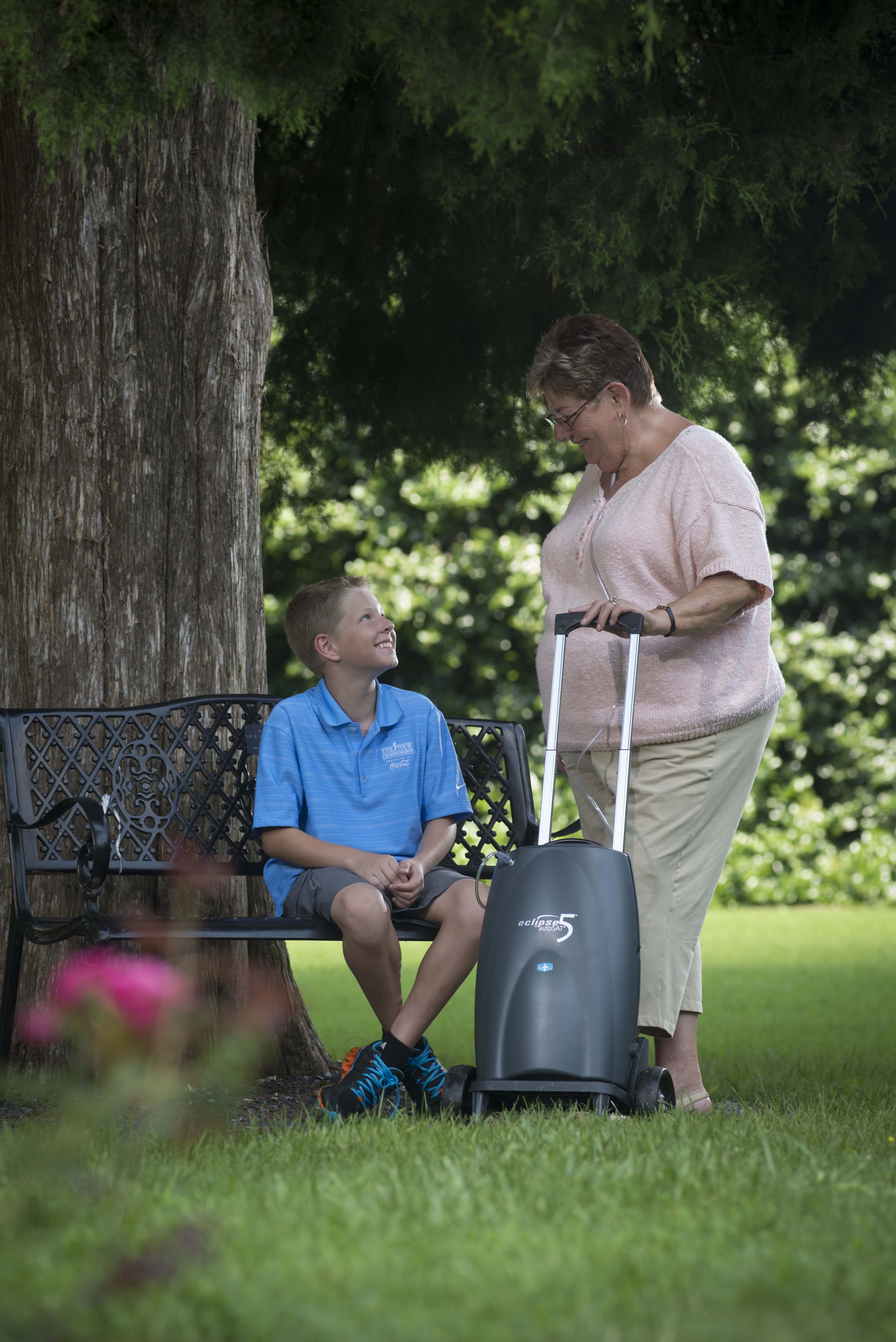
If you need both pulse and continuous flow oxygen, you can use an oxygen tank because there is a valve you can adjust to have the option to do both. If you still want a more portable option, the Respironics SimplyGo is one of the best portable oxygen concentrators that offers a powerful pulse dose setting, but also gives the user a continuous flow option for when they need to adjust to their prescription.
The most popular pulse dose units are the Caire Freestyle Comfort, the Inogen One G5, and the Inogen One G3, because all of these units are under 6 pounds, and they can produce oxygen 1050 -1260 mil/min, and have a long lasting battery life that can also be replaced with an extra so you never have to go without oxygen.
There are a lot of factors besides your oxygen prescription that go into choosing your oxygen device, but understanding your flow rate and your oxygen prescription is something your respiratory specialist will go over with you first before they ask you any other questions. Your oxygen requirement will weed through and narrow down your search, so be sure you have this information before you call us so we can assist you effectively and efficiently!
Overview

Oxygen therapy is a huge step in your life and it means that your disease has progressed to the point of severity where you can no longer survive without supplemental oxygen. Therefore, it is so crucial for you to take the necessary steps to find that best portable oxygen device that will allow you to continue doing the things you love, comfortably.
Oxygen therapy is not a bed rest sentence, you should still be able to enjoy everyday activities, and once you have adjusted to LTOT you will find that you are more capable of doing more things, even more than before you needed supplemental oxygen.
Every part of your body needs oxygen, every single organ and every single cell. If your lungs are unable to function properly and provide for your body, it will start to deteriorate. You will feel irritated, moody, tired, nauseous, and much more. Oxygen therapy assists your lungs in producing oxygen for your body so you feel better and live longer.
Both oxygen tanks and portable oxygen concentrators will help you get the oxygen you need, but one method will be better for you than the other depending on your lifestyle. For example, if you are an active person, you need a portable oxygen concentrator so that you can bring your oxygen with you wherever you go with ease.

If you need to save money, you can talk to a respiratory specialist about how to purchase a refurbished unit for less, or how you can set up a financial plan to help you pay for your oxygen device over time rather than up font.
You also have to take into consideration how durable your breathing device is, and how long it is rated to last. The longer you can have one machine the more money you can save by not having to get a new one every few years, whether yours breaks or you need to increase your oxygen intake.
There are still some things you need to know about oxygen therapy like, the functionality and tips to get the most out of your oxygen device, so be sure to follow our blog posts as we come out with more information like this is the near future!
For now we hope that this guide has given you some insight into buying your oxygen device whether it is a portable oxygen concentrator or another alternative. If you have any further question please comment on this blog post, or email us at info@lptmedical.com.

